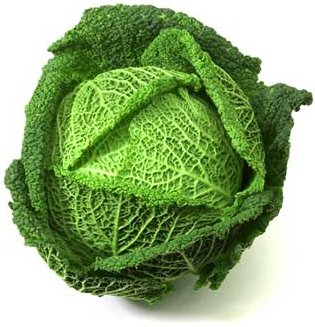

Cabbage
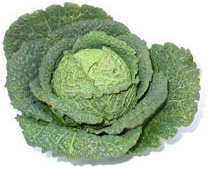
A name applied to several vegetable crops in the genus Brassica (Cruciferae). Cabbage proper, Brassica oleracea, Capitata Group; Chinese cabbage, Brassica rapa, Pekinensis Group; Chinese white cabbage, Brassica rapa Chinensis Group; Ethiopian cabbage or texsel greens, Brassica carinata; mustard cabbage, Brassica juncea, and Portuguese cabbage (couve tronchuda), Brassica oleracea, Tronchuda Group. These are described below. For the long-stalked plants sometimes called tree cabbage. Brassica oleracea variety capitata. A biennial grown as an annual for its edible leaves, which form a compact head. Head shape may be pointed or round. Leaf colour and shape are variable and may be green or red and smooth or wrinkled. Savoy cabbages have deeply wrinkled, dark green leaves. It is assumed to have originated in Western Europe along the coast of the Mediterranean, where wild forms still occur. Similar types are also found along many parts of the Atlantic coast of Europe. The crop was cultivated by the ancient Greeks, who used it primarily for medicinal purposes. Its production is now world-wide: although better adapted to cooler climates, cultivar selection has enabled production to be extended to tropical areas, especially at higher altitude. The optimum temperature range for cabbage is 15-20ºC; growth is usually arrested above 25ºC, although some cultivars selected for the tropics can withstand temperatures as low as –10ºC without serious damage. Young plants can tolerate extremes of temperature better than older ones. Once out of their juvenile phase, which varies markedly between cultivars, plants will bolt or flower when subjected to temperatures below 10ºC for periods of 5-6 weeks. In temperate regions, using appropriate cultivars, cabbages may be harvested throughout the year. In the hotter regions of the world cabbage production is concentrated more into the cool season. The dense-hearted ‘Drumhead’ and ‘Dutch White’ cultivars can be stored for several months in cold store at temperatures of 0-1ºC. Cabbages are tolerant of a wide range of soil types although moisture-retentive soils with a pH 6.0-7.0 are preferable. When crops are to be overwintered, light well-drained soils are more suitable. Club root (Plasmodiophora brassicae) is prevalent on brassicas on acid, badly drained soils. Drainage improvement and liming are necessary under such conditions and the crop should not be cultivated continuously on the same area to prevent build-up of the disease. Cabbages should preferably follow legumes in a rotation in order to benefit from the residual nitrogen. Seeds may be sown in their final position but better land use is achieved by sowing in seedbeds for later transplanting. The seedbed should be well cultivated and brought to a fine tilth. Germination is rapid between 13-16ºC. Seeds should be sown thinly at a depth of about 1-2cm in rows 15cm apart and thinned following emergence to at least 3cm between plants. Seedbeds should be well watered before transplanting. By appropriate choice of cultivars and sowing dates, year-round production can be achieved. Spring sowings will provide harvests throughout the summer and autumn; summer sowings will produce crops for autumn and winter use. Spring harvests are achieved from early autumn sowings. The early crops can be advanced by winter sowings in pots or modular trays under glass before hardening off and planting in their final position in the spring. Final spacing will depend on choice of cultivar but the spring and summer sowings should be transplanted at 60 x 40cm whereas the overwintered crops may be planted at around 40 x 25cm or less if cabbages are to be harvested as greens before they form dense hearts. Like most leafy vegetables, cabbages require adequate supplies of nitrogen and water to grow and top dressings of nitrogen may be beneficial particularly on lighter soils and following leaching by excess rainfall. A wide range of cultivars is available and care should be taken to select an appropriate one for the season. For Autumn-sown crops for harvesting as spring greens, ‘Offenham-Wintergreen’ and ‘Greensleeves’ are recommended. For hearted spring cabbage, suitable cultivars include ‘Dorado’ and ‘Pixie’. ‘Avoncrest’ and ‘Compacta’ are examples of dual-purpose selections which can be planted at higher densities when alternate plants can be harvested as greens to permit remaining ones to develop hearted heads for later harvest. Other late-season cultivars are ‘Castello’, ‘Minicole’ (white), ‘Rapier’ (round), ‘Hawke’ (oval) and ‘Winnigstadt’ (pointed). Spring-sown cultivars for autumn and winter cutting are numerous. ‘Shamrock’ is one of the earlier-maturing cultivars and a number of winter white selections such as ‘Jupiter’ are also suitable for cool storage. Further winter-maturing cultivars are ‘Celtic’, ‘Christmas Drumhead’, ‘Danish Roundhead’ and ‘Tundra’. Savoys are particularly hardy and there are suitable selections to cover the entire winter period, such as ‘Aquarius’, ‘Ice Queen’, ‘January King’, ‘Savoy Ace’, ‘ Winter King’ and ‘Wivoy’. Red types include ‘Autoro’, ‘Mammoth Red Rock’, ‘Red Acre’, ‘Red Drumhead’ and ‘Ruby Perfection’. Early summer cabbages sown under glass for planting outside in spring include ‘Copenhagen Market’, ‘Derby Day’, ‘Golden Cross’ and ‘Stonehead Hybrid’ (round), and ‘Greyhound’, ‘Hispi’, ‘Spivoy’ and ‘Spitfire’ (pointed). Chinese Cabbage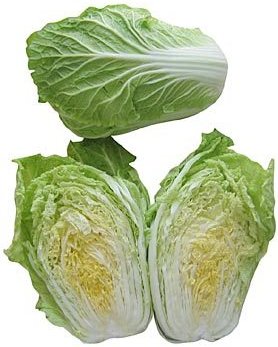
(celery cabbage, Chinese leaves, Peking cabbage, pe-tsai, wong bok). Brassica rapa, Pekinensis Group. A biennial herb, grown as an annual, with large, deeply veined, light green leaves, which normally form a dense, compact, oval-shaped head 30-50cm long. The blanched (i.e. by etiolation, not by boiling) hearts of most cultivars are eaten raw or cooked or pickled. Many of the wide range of cultivars available are adapted to both tropical and subtropical conditions and several, including ‘Market Pride’, ‘Tip Top’ and ‘Santo’, are suitable for cultivation in temperate regions. The barrel-shaped cultivars include ‘China Pride’, medium-sized; ‘Dynasty Hybrid’, very large, more cylindrical; ‘Kasumi’, with loose heads, ‘Tip Top’, heads dense. The Michihli type are tall and cylindrical, typically with celery-like stalks; they include ‘Green Rocket’, ‘Jade Pagoda’ and ‘Monument’. Napa type are round and compact, the leaves usually overlapping at the apex (e.g. ‘Blues’, ‘China Pride’, ‘Two Seasons’). A fairly high stable temperature is required for optimum growth but some cultivars are tolerant of relatively cool conditions and a diurnal temperature range of 5-6ºC appears to promote vigorous growth. For some cultivars, temperatures of less than 15ºC may promote prococious flowering. Excessive rainfall is likely to encourage pathogens but soil must retain adequate moisture throughout the growing period. Most cultivars are day-length neutral but high levels of solar radiation are essential. Plants grown at low elevations sometimes fail to produce adequate heads. Grow in humus-rich, moisture-retentive soil, with maximum light. The crop will tolerate a fairly wide range of soil conditions, including pH, except for very sandy soils. Sow seeds in nursery beds and transplant to well-prepared raised beds when about 6-8cm high, at a spacing of 40-45cm between rows and 30-40cm between plants in the row. Alternatively sow in situ and thin to 30-40cm apart each way. A balanced NPK (Nitrogen, Phosphorus, Potassium), fertiliser and also organic matter should be applied to the soil before planting if soils are low in fertility. Nitrogenous top dressings, at intervals of 14-21 days, are beneficial in promoting leaf production. Mulching is also advantageous in reducing weed competition. Irrigate during dry periods. The outer leaves are often tied up to promote head development. Heads may be harvested 50-80 days from planting and yields of 2-3kg/m² may be obtained. In temperate areas, grow as for lettuce. Sow seed at 10-15ºC and transplant, in favourable climatic areas, to the open ground in early summer. In less favoured areas, greenhouse cultivation is recommended. 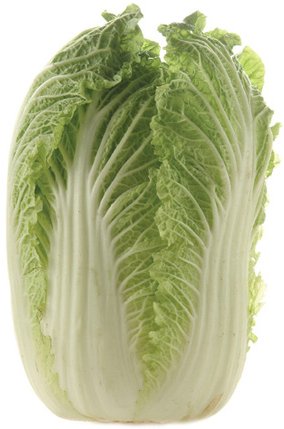 Chinese White Cabbage
Chinese White Cabbage
(Chinese cabbage, bok choy, pak-choi, paak ts’oi. Brassica rapa, Chinensis Group. A biennial herb, grown as an annual; the upright, large, spoon-shaped leaves with thick, white, laterally-expanded petioles, do not form a compact head. It is normally prepared as a cooked vegetable. A wide range of cultivars is grown in many tropical and subtropical areas; a number are also suited to temperate climates. This group of brassicas is tolerant of a wide range of climatic conditions; an evenly distributed rainfall pattern and temperatures ranging from 15-30ºC provide optimum conditions for growth, although temperatures above 23ºC are preferable. Both long-day and short-day forms exist. Grow in deep, medium-loam, high-fertility, well-drained soils with good drainage, pH 5.5-7.0. Sow seed in nursery beds and transplant to well prepared raised beds after about 25 days at a spacing 18-23 x 18-23cm square. Incorporate organic manure and a dressing of a balanced NPK (Nitrogen, Phosphorus, Potassium) fertiliser if soil fertility is low. Subsequent dressings of a nitorgenous fertiliser are recommended to promote leaf growth. Regular irrigation during dry weather, particularly after transplanting, is essential. Mulch to conserve soil moisture. Plants may be harvested 60-90 days from transplanting. In temperate climates, sow seed early in the year in greenhouse conditions and plant out in open ground after hardening and when the air temperature is above 10ºC. Relatively high temperatures for a period of at least 60 days, protection from wind and maximum sunlight are required for successful production. Cultivars include ‘Lei Choy’ (stems medium-thick, to 25cm, pure white; easily grown, bolt-resistant) and its hybrid ‘Joi Choy’ (stems 25-30cm, ivory white; leaves glossy, dark green); ‘Mei Qing Choy’ (compact, vase-shaped; stems pale misty green; leaves oval, rich green); ‘Shanghai’ (green stalk, tsing kang) is short and sturdy with light green stems and succulent leaves; it is fast-growing and tolerates heat well. 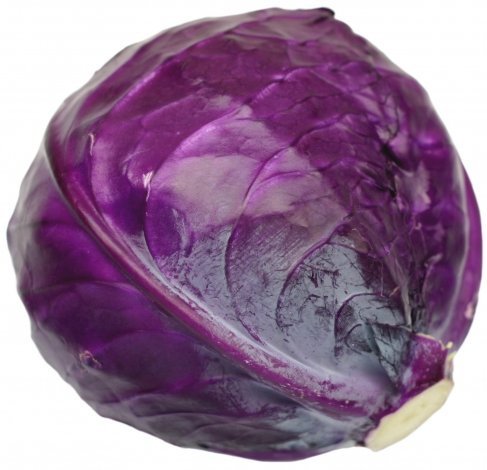
Flowering Pak Choi (tsoi sum) is grown for its thick-stemmed flowering shoots, which are cut when the yellow flowers begin to open. Some forms are called edible rape. ‘Bouquet’ is a vigorous hybrid. Long and short petioled cultivars, with white and green stems, maturing in 40-80 days, have been developed. Chinese flat cabbage (tah tsai tatsoi, Chinese savoy) is a stout, low-spreading plant bearing rosettes 30-40cm across of thick, dark green leaves on broad, pale green petioles; it survives heavy snow but will grow more upright and go to seed in warmer weather. ‘Tyfon’: a cross between Brassica rapa Pekinensis and Rapifera Groups, is frost-resistent, bolt resistent, the leaves mild-flavoured. ‘Yukosai’: a cross between Brassica rapa Chinensis and Perviridis Groups, is vigorous, resistant to turnip mosaic virus, with dark green leaves. Chinese Kale (Chinese broccoli, kaai-laan, fat-shan). Brassica oleracea, Alboglabra Group. A perennial, grown as an annual. The centre of origin is unclear but this type of Asiatic brassica has been cultivated in tropical Asia for a considerable period, and is now widely grown in many tropical areas. It is well adapted to relatively high temperatures but some cultivars, such as ‘Green Lance’, F1 Hybrid, will tolerate low temperatures. Plants will normally flower in short-day conditions. The whole plant is normally used as a cooked vegetable, including the developing inflorescence. Grow in a fertile, well-drained loam, pH 5.5-6.5. Seeds are sown in nursery beds and the seedlings are transplanted when 8-10cm high either at a square planting 0f 30 x 30cm or in rows 45-60cm apart with plants 30-40cm apart in the row. Cuttings of lateral shoots may also be rooted and transplanted. A balanced NPK (Nitrogen, Phosphorus, Potassium), fertiliser should be applied before planting and subsequent dressings of nitrogen given to stimulate leaf growth. Irrigation is required during dry periods. Leaves and shoots may be harvested 60-70 days from transplanting. Laterals and shoots may be produced as a second harvest, after the removal of the terminal shoot. Alternatively, the whole plant may be harvested. Yields of approximately 2kg/m² are obtained. 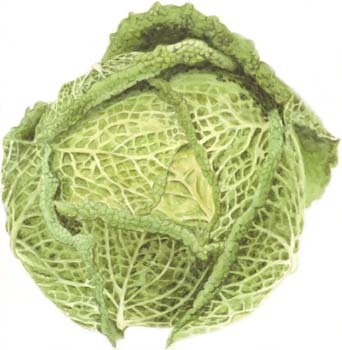
In temperate conditions some cultivars, selected for cold-hardiness, may be raised under greenhouse conditions in a peat-based compost, the seeds being sown in a temperature of over 21ºC. After hardening, seedlings may be transplanted to open ground. Pests and diseases common to brassicas, such as aphids, caterpillars, thrips and mildews, should be controlled by spraying. Irrigation is necessary during dry periods. Ethiopian Cabbage, Texsel Greens(Abyssinian mustard), one-month cabbage). Brassica carinata (Cruciferae). The young leaves are used as a cooked vegetable, the stems are also peeled and boiled for use in stews. Flower buds and immature leaves are eaten raw in salads, and the seeds are cooked or crushed for use as a condiment. This species is very tolerant of climatic conditions but relatively cool temperatures in the range 15-20ºC with 5-6ºC diurnal variation, moderate rainfall and 60-80% relative humidity are desirable. Most cultivars are adapted to variable daylengths, a number are suitable for cultivation in temperate climates. ‘Texsel’ (‘Tamu Texsel’, ‘Tel-Tex’) has light green, glaucous leaves, mild-flavoured (especially when young). Grow in freely draining loam soils; incorporate a balanced NPK (Nitrogen, Phosphorus, Potassium), fertiliser before planting, and top dress with nitrogen during growth on soils of only moderate fertility. Irrigate in dry periods. Seeds are sown in nusery beds and transplanted after about 40 days to well-prepared raised beds or ridges at a spacing of 50 x 50cm. Alternatively, cuttings may be taken from mature plants and established at a similar spacing. In temperate zones, sow seed in early spring in moderate heat in greenhouse conditions and either transplant to beds under protected cropping conditions or plant out into the open in favourable climatic conditions. Sow in situ at fortnightly intervals from spring to early summer. Early sowings need protection from all frost. Where plants are grown for immature leaves, space at 25cm between rows, 2.5cm within the row; they can be cut within 5-7 weeks. Mustard Cabbage(Chinese mustard, mustard greens, leaf mustard, Indian mustard, kai choi. Brassica juncea. An erect, branched annual up to 75cm high, with bright green, wrinkled, spreading, petiolate leaves up to 20cm long; some cultivars have well-developed, thickened stems. It is widely distributed in the tropics and subtropics of South, Central and East Asia and is widely grown in eastern Europe, tropical Asia and West Africa. A fairly high, stable temperature is required for optimum growth although some cultivars are adapted to withstand cold. Most cultivars are well adapted to short daylengths and are tolerant of high rainfall, exceeding 2m per annum, although dry sunny periods are required for satisfactory yields. The leaves and thickened stems of some cultivars are used as a cooked vegetable and both stems and flowering shoots of some cultivars are preserved in salt and vinegar. Thorough cooking is required to destroy the glucoside sinigrin which occurs in the leaves. This species is also grown for the pungent oil contained in the seeds. 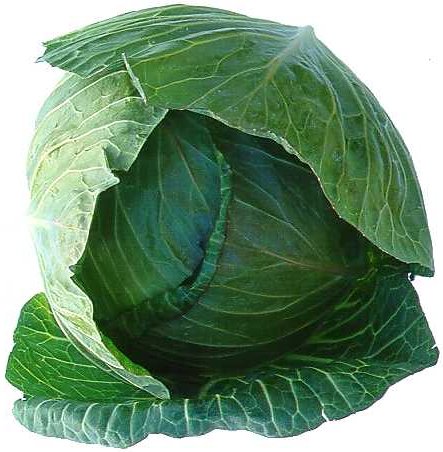
In tropical climates, soils with a high organic content and a pH of 5.5-6.5 are generally preferred. Seeds are grown in nursery beds and the seedlings transplanted, when about 7.5cm high to rows 40-45cm apart with plants 30-40cm apart in the row. These planting distances should be modified for either very vigorous or small-growing cultivars. A dressing of organic manure and balanced NPK (Nitrogen, Phosphorus, Potassium), fertiliser before planting, followed by top dressings of a nitrogenous fertiliser, are required on less fertile soils. Mulching is often used to retain soil moisture and suppress weeds. Plants may be harvested 30-60 days from transplanting, depending on the vigour of the cultivar, and yields of 2-3kg/m² may be obtained. In temperate climates, sow seeds in the greenhouse, at temperatures above 18ºC; transplant seedlings to beds or growing bags when 8-10cm high. They may also be grown in the open in favourable climatic conditions. Portugese Cabbage(Couve tronchuda, tronchuda kale). Brassica oleracea, Tronchuda Group. Transitional in type between kale and ordinary cabbage, couve tronchuda in appearance in a non-heading cabbage with large green leaves and prominent white midribs. The main season of availability is during the autumn. The broad midribs can be trimmed and cooked like kale while the foliage may be prepared as ordinary cabbage. Cultivation is similar to that of cabbage. Plants should be raised in a seed-bed from a spring sowing and transplanted at a spacing of approximately 50-60cm square during the early summer. Harvesting can continue throughout the autumn. The crop may be advanced by raising plants under glass and, after hardening off, planting them out in the spring.
|
Home
Grow Nuts
Grow Herbs
Grow Fruit
Cyberian Index
If you like this website and want one of your own contact
Cyberian All information correct at
time of publication and open to updates as necessary. No part of this website,
or its vectors, may be produced in any shape or form, using any type or design
of medium, system, equipment or otherwise without the prior written consensual
notice of the Cyberian. Any breach of these requirements will result in the
appropriate action. If in doubt, e-mail contact is recommended.
Some components of this website were obtained as open-source software and are
used in the same non-profit manner on this website.